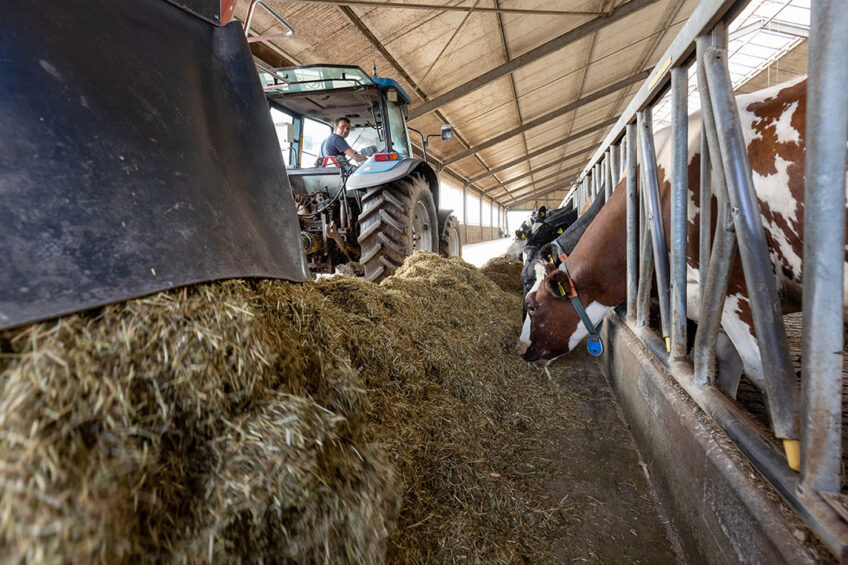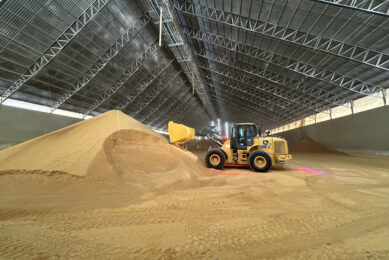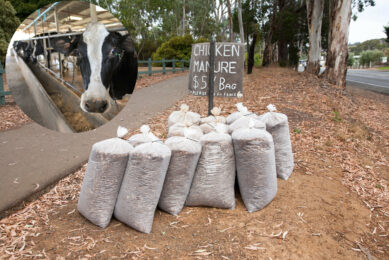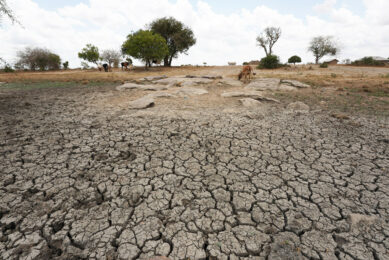Dairy feed – exploring costs, climate and local sourcing

The Netherlands is a leader in Europe in increasing the use of local crops and food industry by-products in dairy cattle diets. The local dairy industry is making more progress with this every month, and other countries such as Germany are watching closely.
But the situation is complex, explains Dr Wilfried van Straalen, a researcher at Schothorst Feed Research of Wageningen University.
What do dairy cattle currently eat in the Netherlands, and why?
“Cattle feed is mainly by-products from grain or oil seed processing, and a common ingredient is palm expeller meal imported from Indonesia and Malaysia,” says Van Straalen. “From 5-25% of the concentrate feed can be palm expeller meal, because it’s high in protein, the price is reasonable, and it’s well evaluated as energy source within the Dutch feed industry.”
However, using less of this feed source is generally considered desirable in Holland from a local use/transportation perspective and also with regard to concerns over burning rainforest to grow palm. In fact, this feed ingredient is not being used some other European countries like Scandinavia anymore, notes Van Straalen. This is due to environmental concerns, but perhaps also because of its high shipping costs and good availability of local crops such as barley and oats.
“Also, in the Netherlands, we feed dairy cows meadow grass, corn silage and grass silage, and also wet by-products like beet pulp, brewer’s grains and potato byproducts,” says Van Straalen. “These products fit well in ruminant diets. Brewer’s grains contain high fibre and bypass protein. Potato processing by-products have a relatively high percentage of by-pass starch. Beet pulp used to be dried and pelleted, but due to the costs, it’s now being kept wet and ensiled. It has a high digestible fibre content, which is very good for dairy cattle.”
Dutch dairy cows also receive corn gluten feed, wheat gluten feed, wheat middlings and corn DDGS from within the country or from across Europe. These materials also have high protein and fibre levels. Citrus pulp is also part of the usual diet but is currently less available. Wheat, barley and sunflower meal are also used.
More of these local feed sources are expected to be added to the dairy cattle diet in Holland, says Van Straalen, from more regions and more industries. “The dairy industry wants this,” he says, “as does the consumer and government.”
Legislative push
The push for more local feed is cost-driven but also due to increasing environmental concerns and legislation. Everywhere in the EU, farmers are under increasing restrictions in terms of greenhouse gas emissions (nitrous oxide, CO2, methane, ammonia) – and in Holland, as anyone in agriculture is aware, the focus on nitrogen restrictions is very strong.
That is why there is a development towards maximum crude protein in diets, explains Van Straalen, which reduces nitrogen waste. “This will mean a focus on good quality protein sources,” he says, “but also a much closer look at amino acid levels in diets to better match cattle needs. This will be more important in ruminant feeds in the future.”
There also must be more research, he stresses, into how to use by-pass amino acids and protein in the diet. That is, there are different ways to protect amino acids from ruminal degradation, to ensure they stay intact until they are absorbed in the small intestine, such as changing the chemical structure or using a protective coating.
The good news is that amino acid products have improved significantly, according to Van Straalen, in terms of possessing good by-pass protection but also digestibility in the intestine.
Good by-pass value has been achieved with rapeseed meal and soybean meal in the past by treating it with formaldehyde, but this treatment has been banned in other EU countries and will be abolished in the Netherlands this year. There will therefore be a rapid switch in the coming months in the Netherlands to other treatments, untreated meals or other sources of by-pass protein.
While lupins and peas have protein with good by-pass value, they must be toasted to achieve this. That’s not an industry practice yet, says Van Straalen, but research into this at Schothorst Feed Research and at other institutes and companies continues.
One dairy feed component Van Straalen does not expect to change in Europe over the years to come is soybean meal, hopefully certified against rainforest destruction. That’s due to its relatively high protein quality.
Commitment to local feed
With regard to milk production, PlanetProof notes “by having a minimum of 50% of the feed produced in-house, [farms] are encouraged to further close the cycle…by using self-produced raw materials, such as manure and cattle feed, and purchasing raw materials efficiently and limited, the dairy farmer can close the cycle.”
Government education
In Van Straalen’s view, the biggest challenge with increasing the amount of local feed use among Dutch dairy farmers lies in the lack of knowledge of government officials.
“The government here, in order to reduce ammonia, has made a request for voluntary stops to milk production and plans to force buyouts of farms in 2024 if needed, but there are other solutions,” he says.
“We have a lot of research on how to reduce protein, but there is more to be done to determine how low you can go without affecting cow performance. And if we use more grass, if grass is the main forage source and if farmers don’t’ fertilise the fields, the nitrogen/protein content of the grass, and consequently ammonia emissions from cow waste, will be lower. This means we may have to accept lower production of milk to reduce ammonia. We need more discussion of these and other ideas.”
Join 13,000+ subscribers
Subscribe to our newsletter to stay updated about all the need-to-know content in the dairy sector, two times a week.
 Beheer
Beheer










 WP Admin
WP Admin  Bewerk bericht
Bewerk bericht